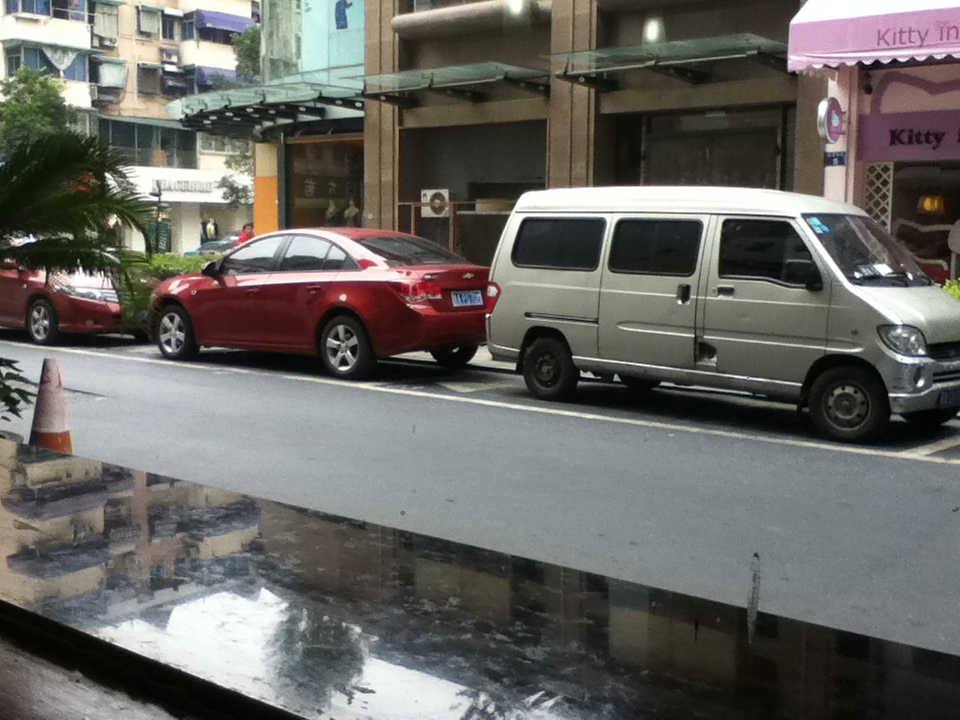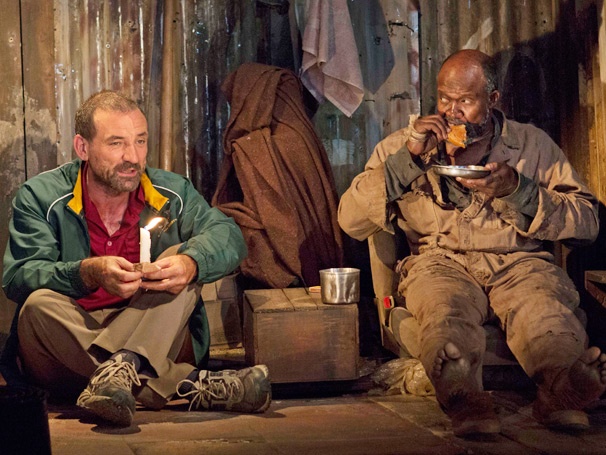Vulgar and wretched, yet sympathetic, cries of a traumatized white train driver echoed the compact theater and startled me with his every exclamation as I was sitting merely a few feet from stage. Roelf Visagie (Ritchie Coster), the train driver, enters the scene to accompany Simon Hanabe (Leon Addison Brown), the old gravedigger, at center stage by climbing down from realistic train tracks onto an actual bashed-up car located at the side of a sand and garbage covered stage.
Scattered everywhere were mounds of sand to represent graves of the “unnamed,” those who died and have not been claimed for. The setting was stagnant; the play took place at the graveyard all throughout because the element of time was nicely made clear the focus by the play of lighting to represent the passing of time.
Everything was truly realistic: the sand dust floating in the air with every forceful digging Roelf does, using actual fire to light the candle, and the power in both the characters’ emotions. With the audience situated so close to the stage, it is not difficult to understand that the play captured everyone’s attention and grasped onto our emotions.
Athol Fugard’s The Train Driver aimed to bring to light a different point of view during apartheid in South Africa. The play holds the view of the situation through the mind of the white train driver in the times where whites were superior to blacks. Here, Fugard portrays that though Roelf was a white male, accidentally killing a black woman and her child was not an easy thing for him to get over. In fact, he exclaims, “Does she know she ruined my life?” We learn through Roelf’s mix of angered and distressed emotions effectively portrayed by his drunk-like behavior of endless rants and incomprehensible murmuring that he blames the unnamed black woman, who jumped in front of his train, for his loss of everything and his hope to find an answer to essentially the question, “Why is life so?” We can see he shifts his perception from completely blaming her to, in the end, sympathizing for her and wishing that somebody had claimed her, as his steps and voice become noticeably calmer. It was touching to learn that despite the clash and constant tension between blacks and whites in the apartheid in South Africa, Roelf, a white man, through socializing with an old black haggard character, Simon, was able to come to a conclusion that although he lives in a completely different world and he has no way of finding out the way the unnamed black woman may have lived, or why she decided to jump in front of the train, he is certain that she is human too and deserves more respect in her grave. She deserved someone to claim her, thus he wished he had done so for respect.
Fugard’s play, The Train Driver, was performed so smoothly and realistically that this is worth the time for any one to give theater a shot.










































